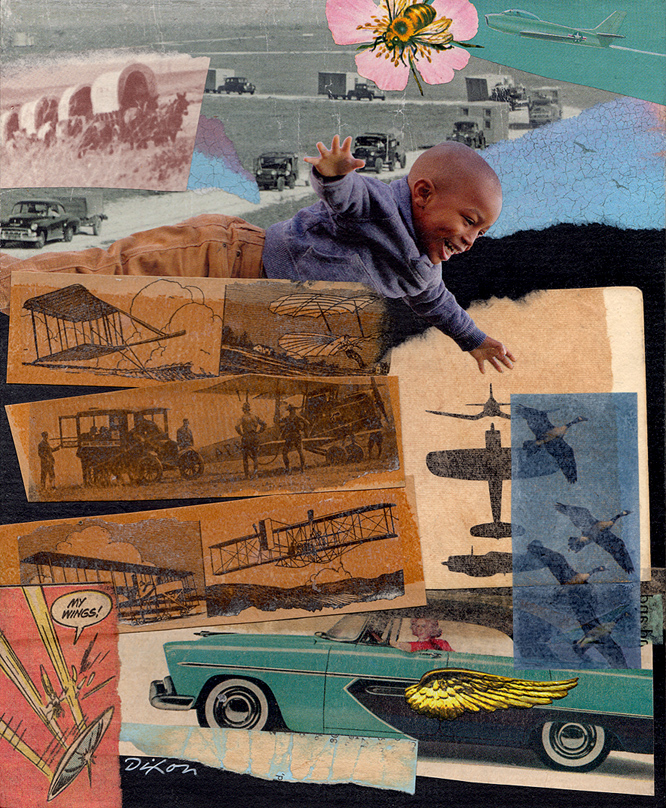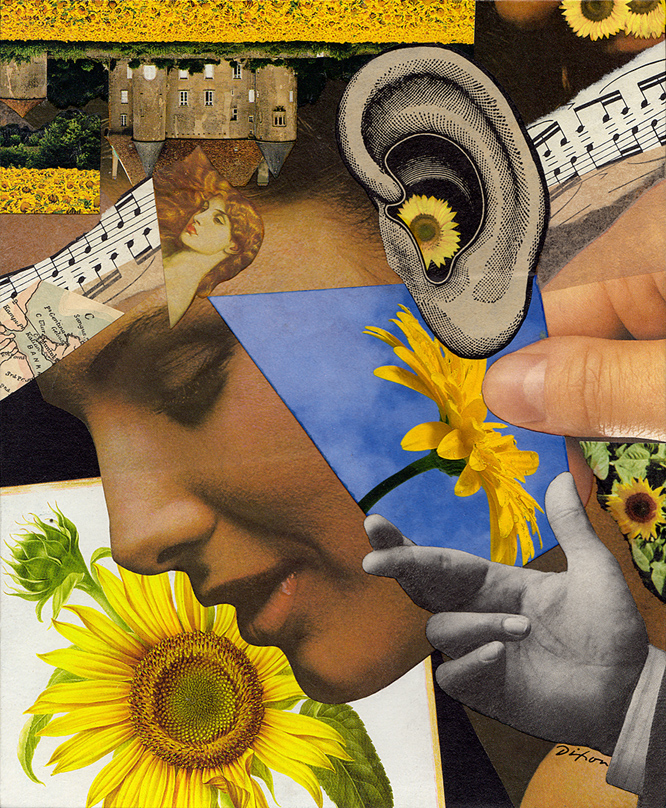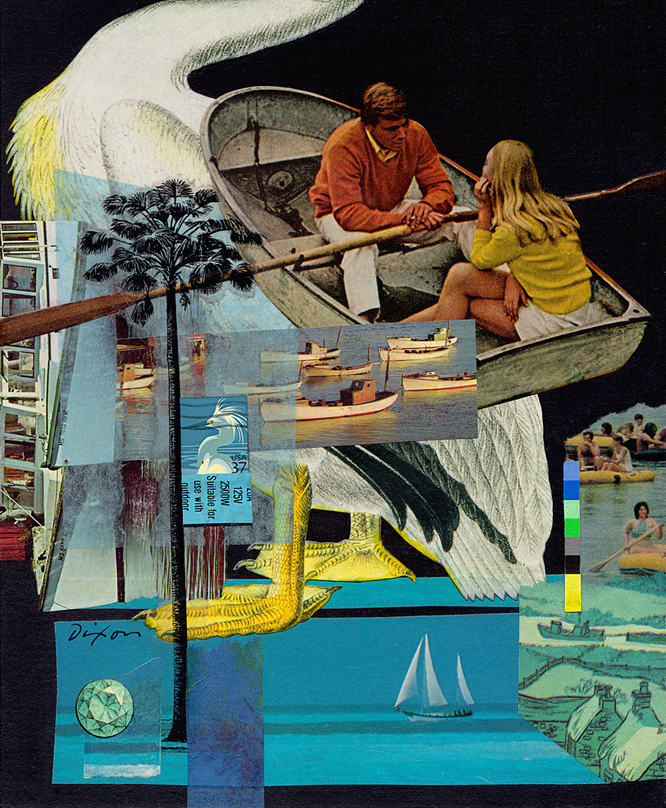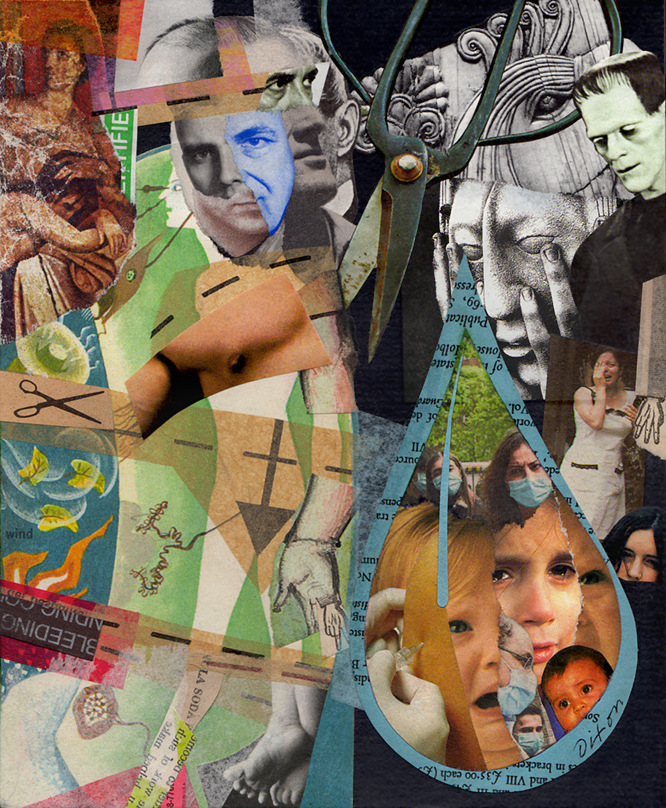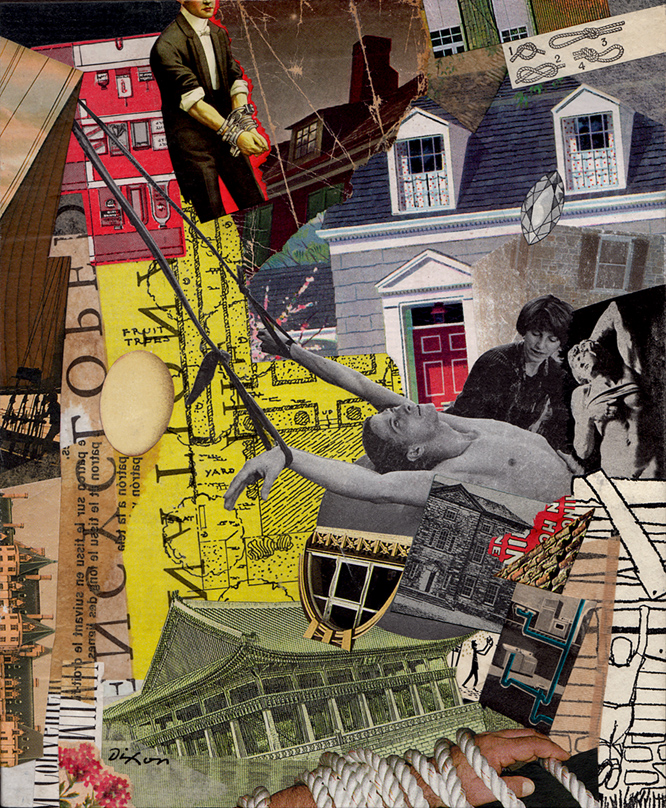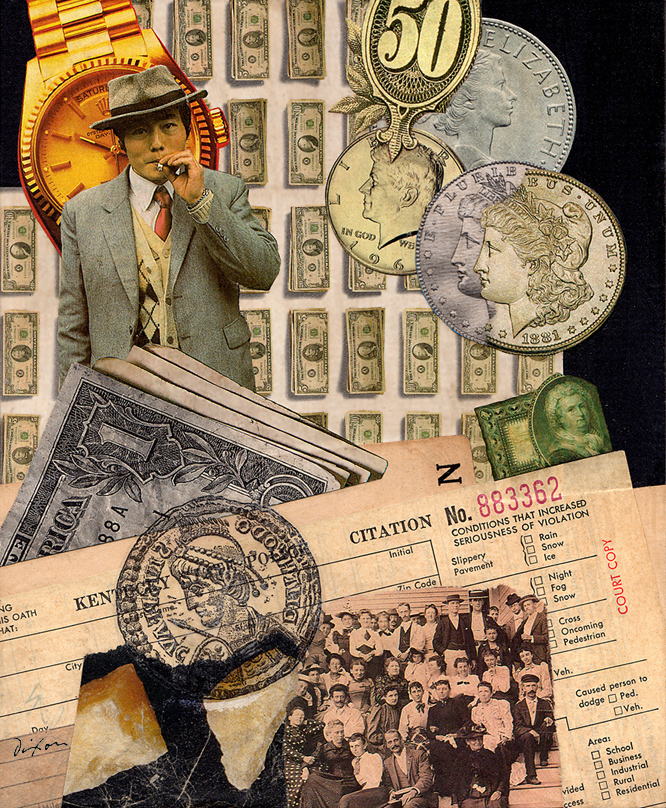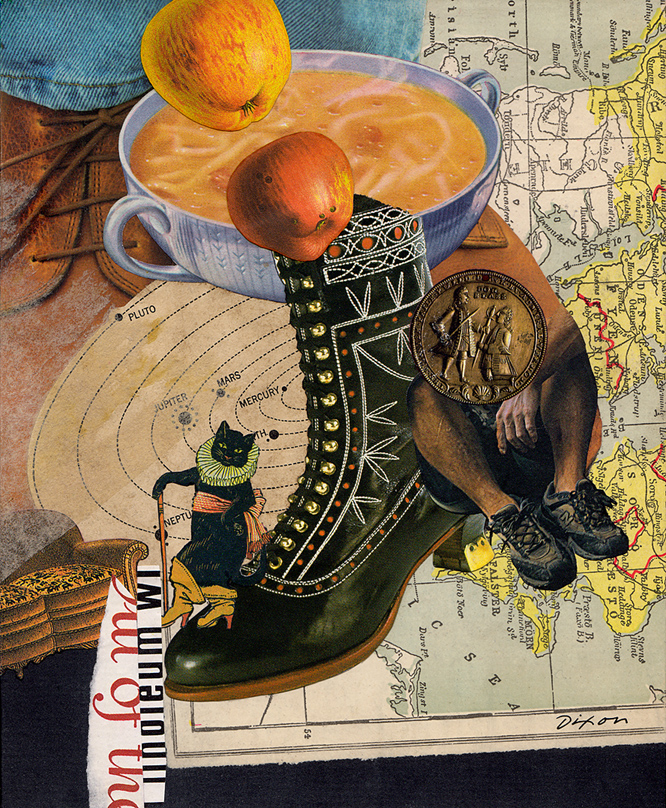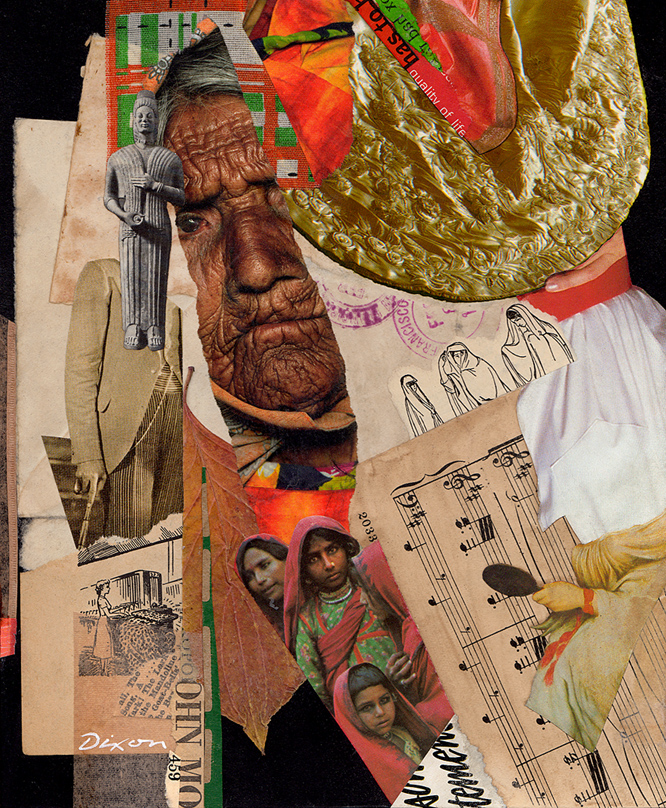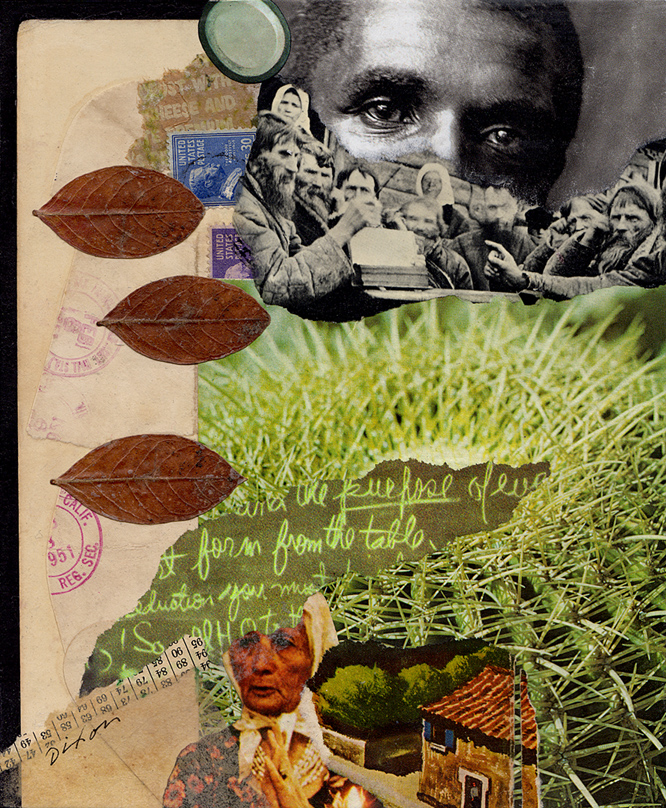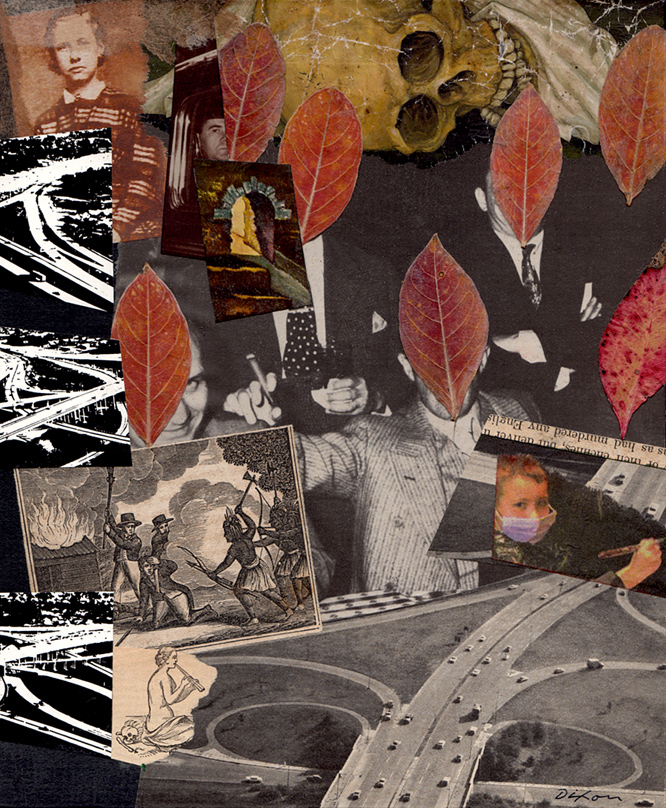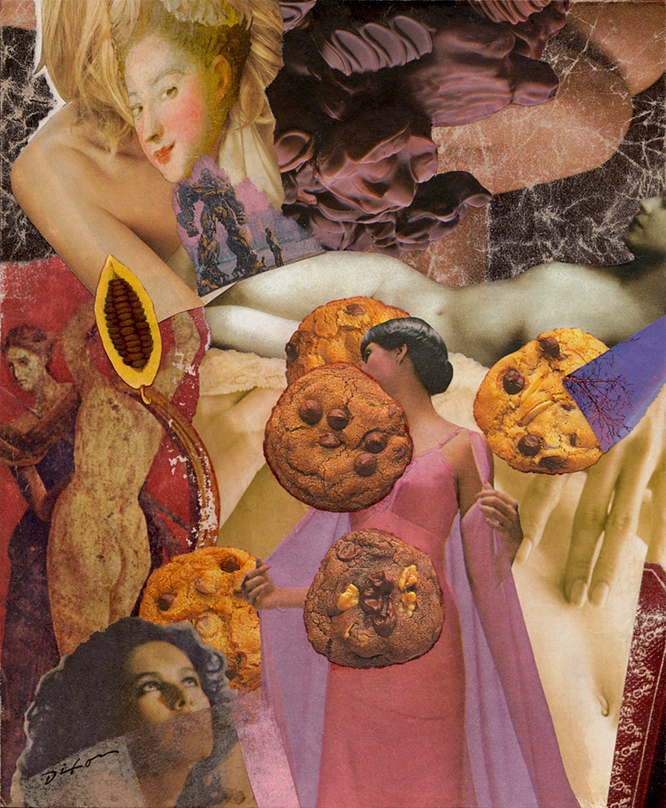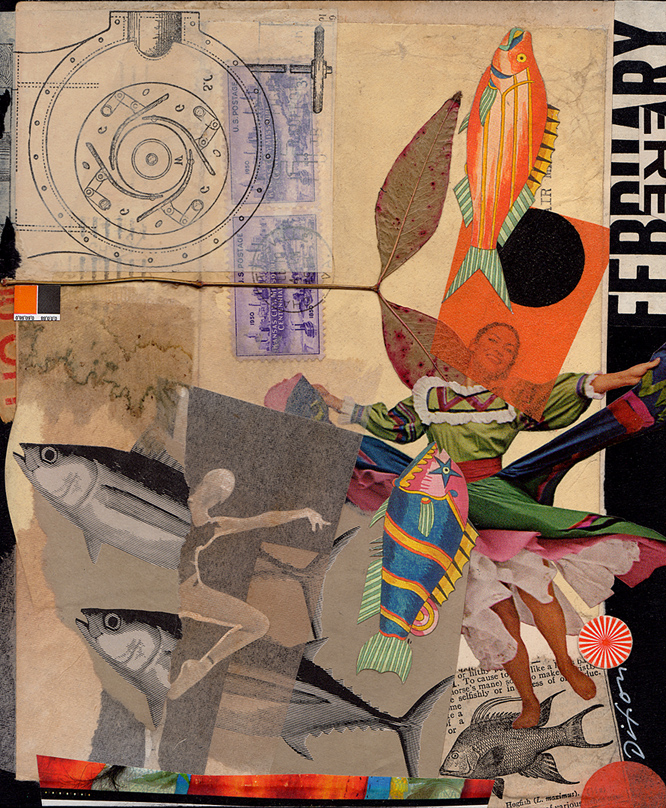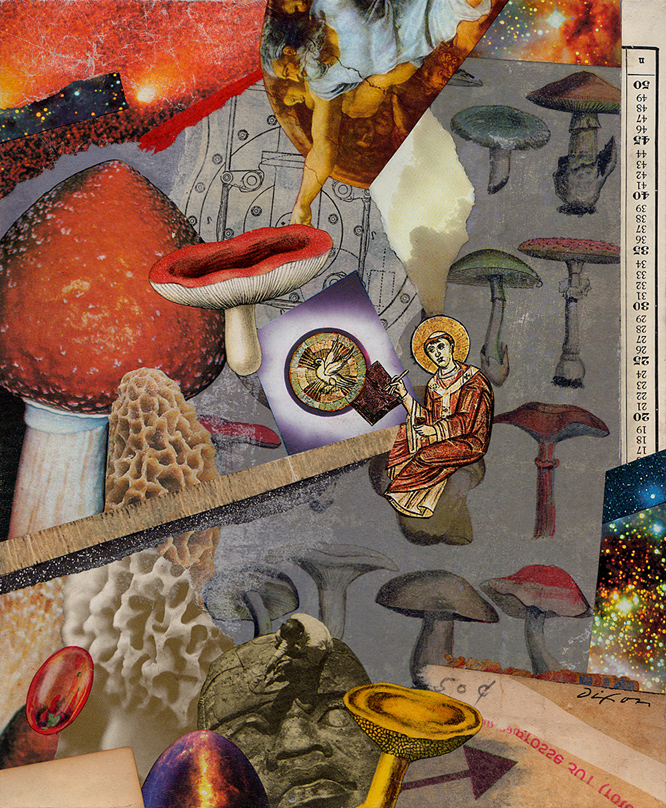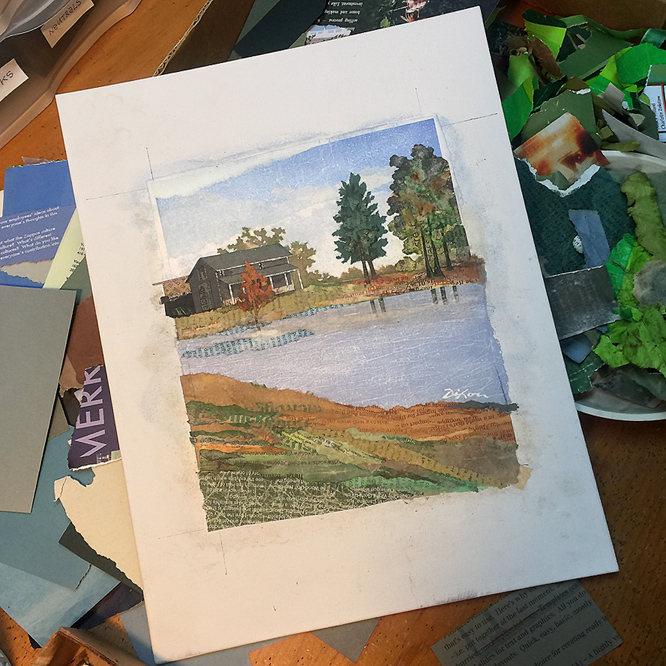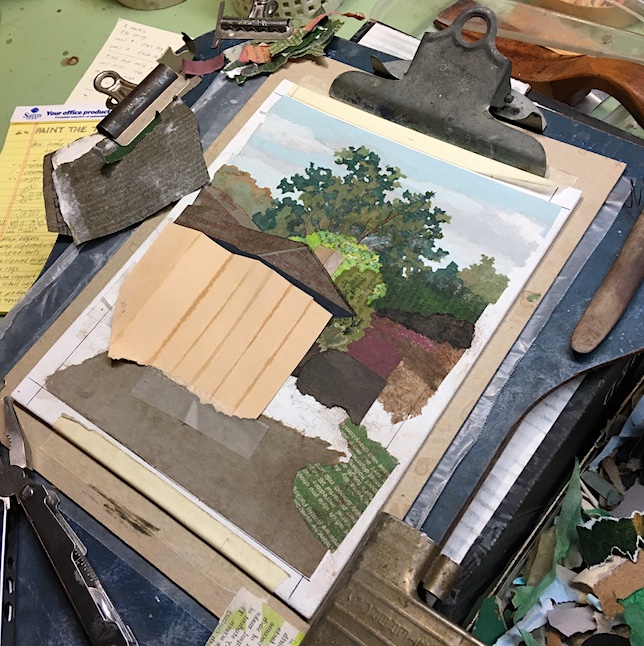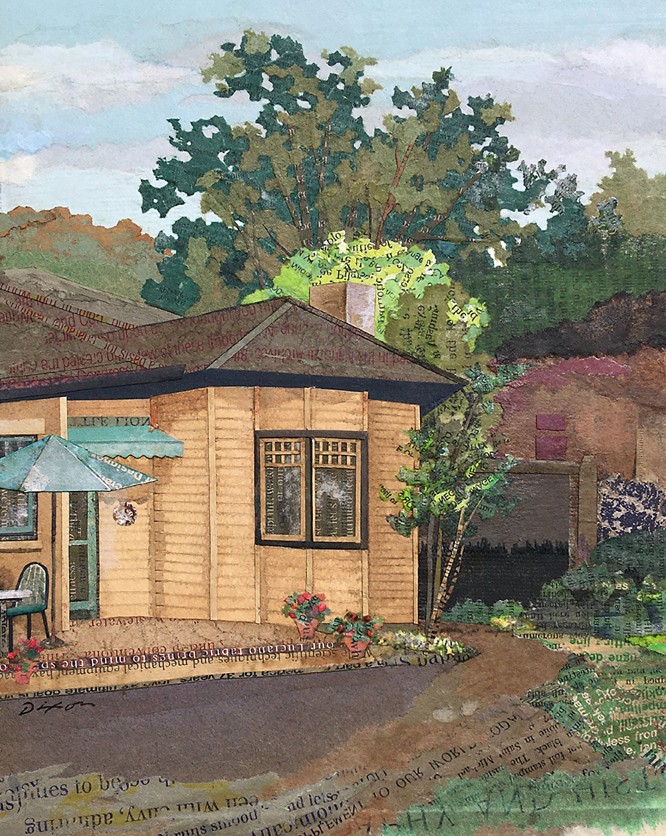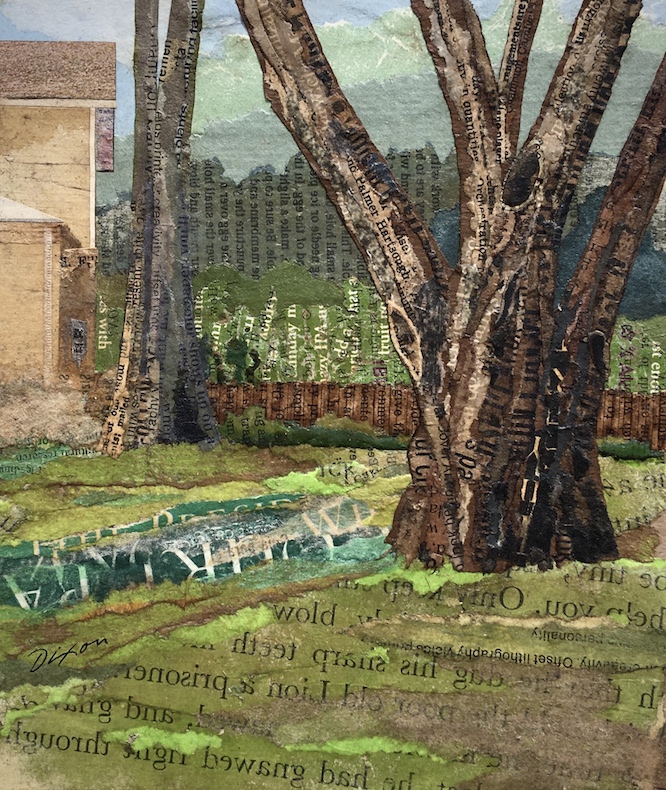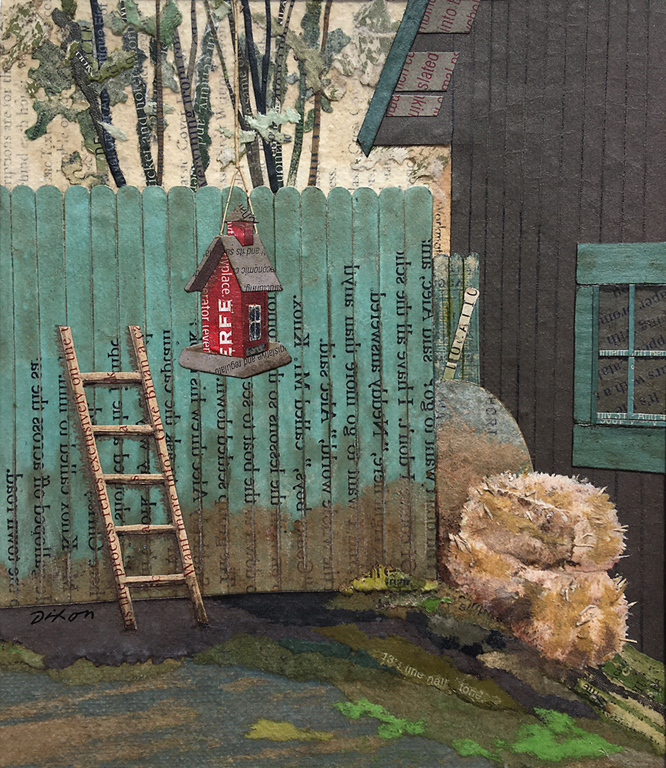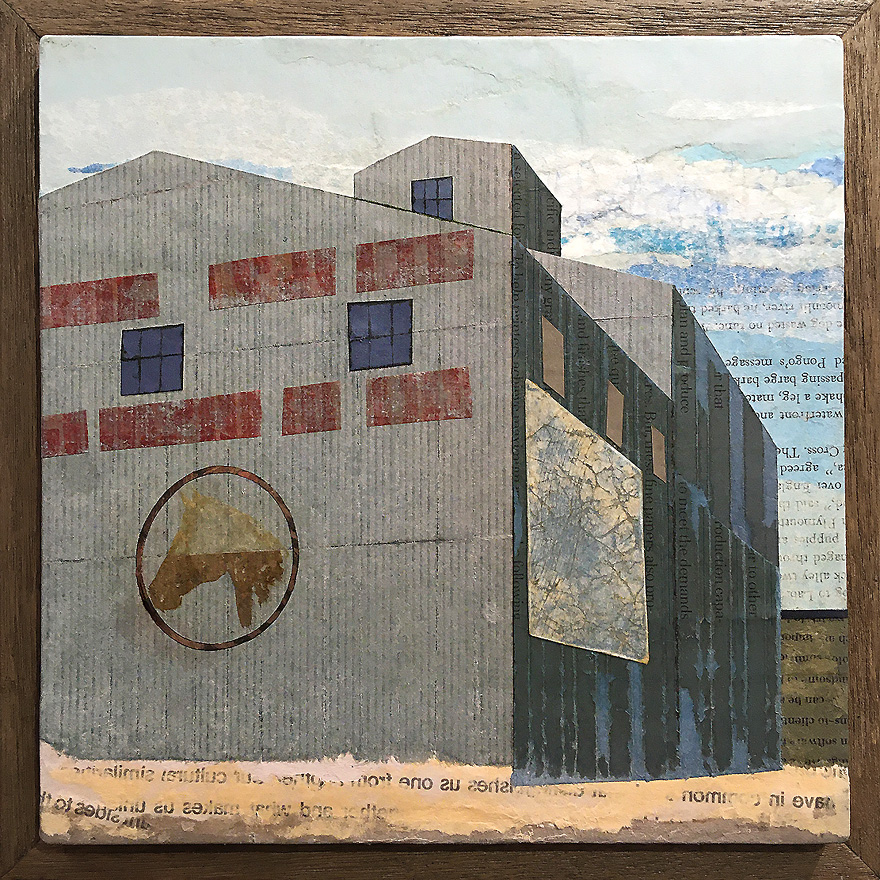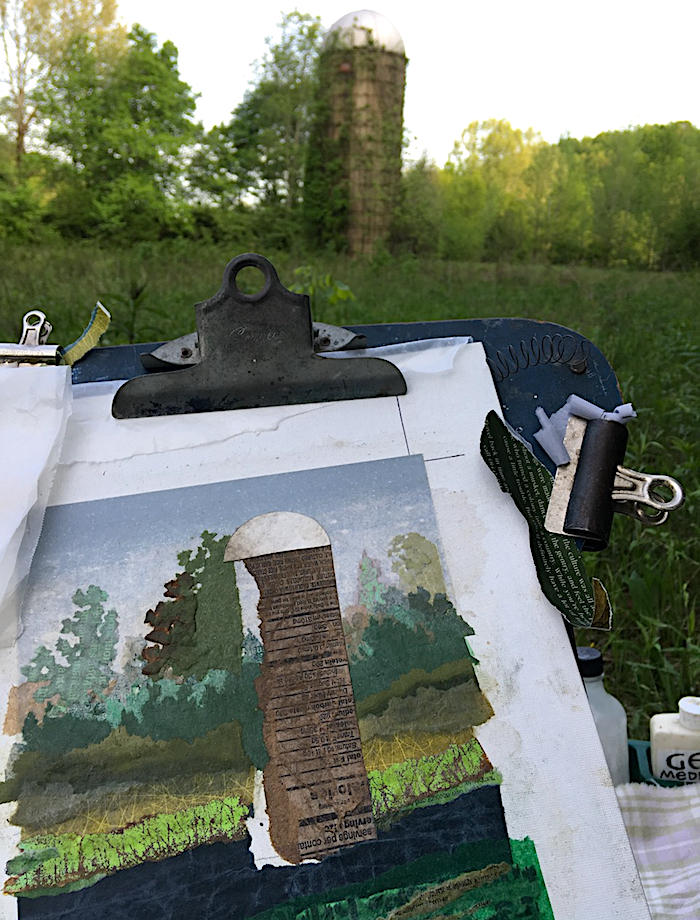“The thing is to be attentively present. To sit and wait is as important as to move. Patience is as valuable as industry. What is to be known is always there. When it reveals itself to you, or when you come upon it, it is by chance. The only condition is your being there and being watchful.”
— Wendell Berry
At the close of 2021, based on my plein-air practice to date, I applied to the Kentucky Arts Council and received a KAR grant with funding from the National Endowment for the Arts. The goal of my project is an exhibition-worthy body of collage landscapes created from salvaged ingredients consisting of litter, trash, and recycled papers. The new works are en plein air interpretations of actual rural spots in Central Kentucky. The collection will be made available to partnering venues as a thematic exhibition that carries a call for greater awareness of how we interact with our environment. The traveling display will invite community engagement in the form of gallery talks, student opportunities, and online references — with a message for greater litter awareness and a cleaner countryside in the Commonwealth.
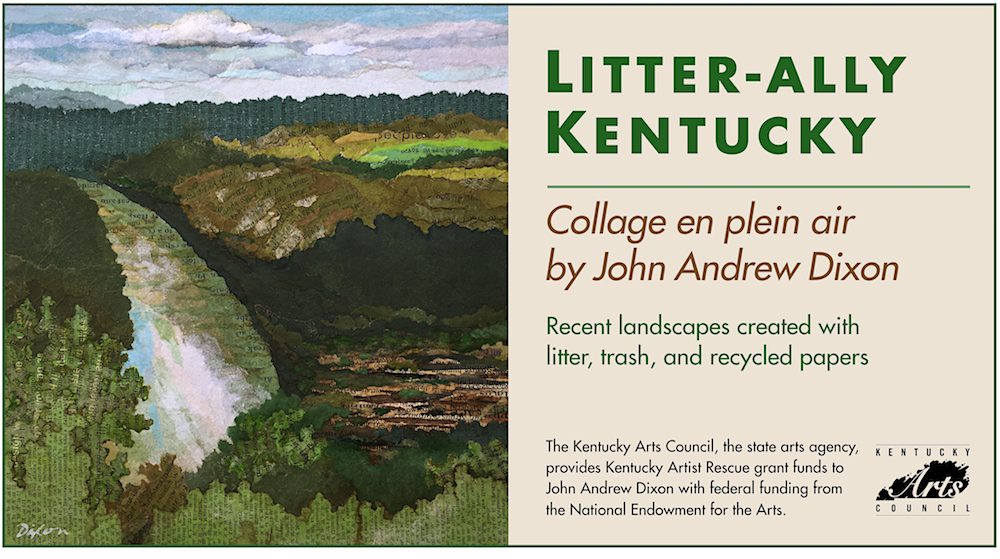
To fulfill this grant-supported process, I am nearing the end of my creation phase. It’s been a period of acquiring paper litter, arranging visits to rural locations, engaging with property owners who accommodate my on-site sessions, starting the landscapes outside, and making follow-up studio refinements. Collage artworks will have been made at over a dozen locations in six contiguous Central Kentucky counties around Danville. I avoid exceeding my outside time when completing a landscape indoors, to stay within a 50:50 ratio. 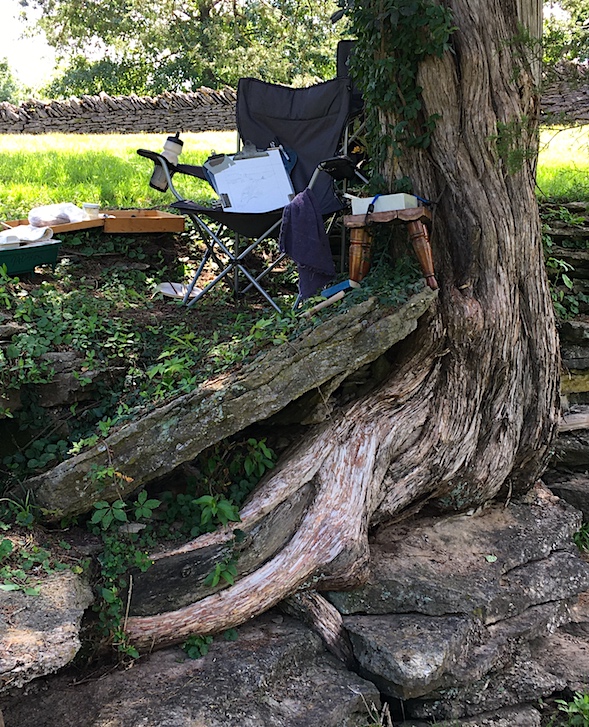 There are techniques for details that are best left to the end, when the breeze is not a factor, but my goal is to retain the fresh, intuitive quality of the initial impression.
There are techniques for details that are best left to the end, when the breeze is not a factor, but my goal is to retain the fresh, intuitive quality of the initial impression.
It often seems like I’m behind schedule, until I remind myself that the entire process is not unlike the act of being present in nature. The way forward can be revealed as much by receptivity as by forced progression. I’ll spend the balance of the year with finishing touches, having the artwork professionally framed, preparing support materials and promotions for my sought-after series of shows, plus contacting venues suitable for the traveling display (which will be chosen in part based on the anticipated reach and exposure for optimum audiences, including youngsters).
An important part of this project has been my desire to interact with the public about a relatively recent area of concentration for me as an artist — representational collage. Until they observe more closely, many people think my landscapes are traditional paintings. It’s been rewarding to watch this sense of discovery, so similar to what I experience as I explore the potential of art made from paper. This connection with others fired my enthusiasm and prompted me to propose a way to engage audiences with another layer of meaning. By including a higher percentage of litter and trash, I hope to further a conversation about the ongoing problem of litter in Kentucky and the solid waste crisis in general. As I exhibit “painted” rural scenes that were created with by-products of our wasteful society, I’m optimistic that my art will promote a more conscious regard for stewardship of natural places.
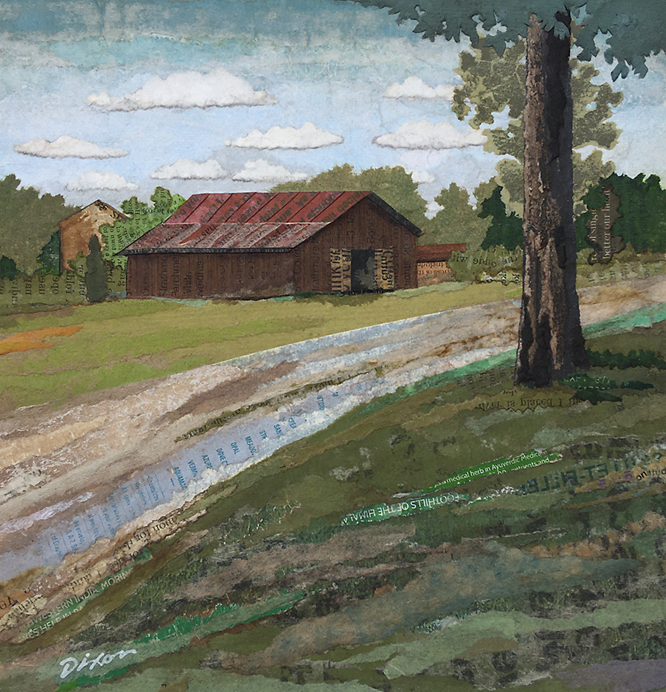
Near Catnip Hill
collage en plein air by J A Dixon
50% / 50% — site to studio
8.375 x 8.625 inches, 2022
giclée print available
